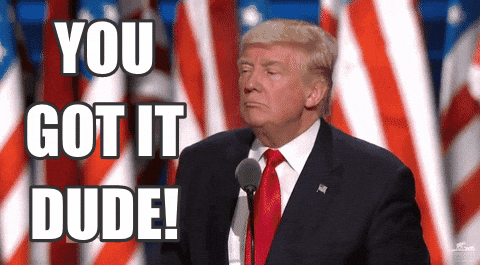Quick definition of Competition Authority Clearance
Competition authority clearance is the formal approval process a merger or acquisition must undergo to ensure that it does not create unfair competition in the market. During this process, competition authorities evaluate the potential impact of the transaction on market dynamics, consumer choice, and pricing. By obtaining this clearance, companies seek to alleviate any regulatory concerns and ensure compliance with antitrust laws, allowing the transaction to move forward smoothly and without legal obstacles.
Let’s into the Competition Authority Clearance origin
We commonly use the term “competition authority clearance” to refer to the regulatory scrutiny faced by companies involved in mergers and acquisitions. This concept became more prominent as economies grew and industries consolidated, leading to fears of monopolistic behavior. The origins of this requirement date back to early antitrust laws aimed at protecting consumer welfare and promoting fair competition. As we see an increasing number of transactions that could potentially harm market integrity, competition authorities play a vital role in assessing proposed mergers and acquisitions to maintain a competitive landscape.

The Competition Authority Clearance (complete & serious meaning)
Competition authority clearance refers to the process by which regulatory bodies, known as competition authorities, review and approve or reject mergers and acquisitions to ensure they do not significantly reduce competition in the market. This process is crucial for maintaining fair market practices and preventing monopolies.
Steps in the Clearance Process
- Notification and Filing: Parties proposing a merger or acquisition must notify the relevant competition authority, typically within a specified timeframe. For instance, in the United States, transactions valued at over $101 million must be reported to the Federal Trade Commission (FTC) and the Department of Justice (DoJ) under the Hart-Scott-Rodino Act [1][5].
- Preliminary Review: Upon receiving the notification, the competition authority conducts a preliminary review to determine if the transaction raises any antitrust concerns. This initial review typically lasts 30 days (15 days for cash tender offers or bankruptcy transactions) [1][5].
- Clearance or Second Request: If the preliminary review does not raise significant concerns, the transaction is cleared, and the parties are free to proceed with their deal. However, if there are concerns about potential anticompetitive effects, the agency may issue a “second request” for additional information. This extends the review period and requires the parties to provide detailed documents and data about their businesses and market conditions [1][3].
- In-Depth Analysis (Phase II): If a second request is issued, the competition authority conducts an in-depth analysis (Phase II) to assess the transaction’s impact on competition. This phase involves extensive information gathering, including internal documents, economic data, and detailed questionnaires to market participants [3][4].
- Remedies and Decisions: During Phase II, the competition authority may request remedies from the merging parties to address potential competition concerns. These remedies can include structural changes (e.g., divestitures) or behavioral commitments (e.g., maintaining certain market shares) [3][4].
The final decision can be to unconditionally clear the merger, approve it subject to accepted remedies, or prohibit the transaction if no adequate remedies are proposed [3][4].

Key Players and Jurisdictions
– United States: The FTC and DoJ share jurisdiction over merger review. Transactions are assigned to one agency based on expertise in the industry involved [1][5].
– European Union: The European Commission (EC) is responsible for merger control. It conducts a Phase I review within 25 working days and may proceed to a Phase II investigation if necessary [4].
– India: The Competition Commission of India (CCI) reviews mergers and acquisitions. Transactions are screened in Phase I, and those raising concerns proceed to Phase II [3].
Importance of Clearance
Competition authority clearance is essential for maintaining competitive markets and preventing anticompetitive practices. Failure to obtain clearance can result in significant fines, post-review remedies, and potential unraveling of the transaction [3]. The process ensures that mergers do not create dominant positions that could harm consumers by reducing competition.
Why is it important to understand this term in M&A?
Understanding competition authority clearance is crucial in mergers and acquisitions because it ensures that transactions comply with antitrust laws. This process helps prevent deals that could significantly reduce competition, thereby protecting consumers and maintaining fair market practices. It also provides a framework for resolving potential anticompetitive issues through remedies, ensuring that the benefits of mergers are realized without harming the market.
References:
[1] FTC. (n.d.). Premerger Notification and the Merger Review Process.
[2] Law Insider. (n.d.). Competition Clearance Definition.
[3] Concurrences. (n.d.). Clearance phase II (merger).
[4] European Commission. (2021). Merger control procedures.
[5] FTC. (n.d.). Merger Review.
Case study about Competition authority clearance in Uber’s Acquisition of Careem

In March 2019, Uber Technologies, Inc., the renowned ride-hailing giant, made a significant announcement regarding its intention to acquire Careem Networks FZ, the foremost ride-hailing service in the Middle East. This move, valued at $3.1 billion, was poised to reshape the competitive landscape of the region and drew immediate attention from competition authorities across multiple jurisdictions due to potential anti-competitive concerns.
The deal structure was intriguing, comprising $1.7 billion in convertible notes and $1.4 billion in cash. As authorities began their reviews, Uber’s ambitions faced scrutiny from various regulatory bodies around the world. In the United States, the Department of Justice (DOJ) took center stage in assessing the ramifications of the proposed acquisition. Similarly, the Directorate-General for Competition in the European Union examined the implications, alongside national competition authorities from the Middle East and North Africa, including Qatar, Egypt, Pakistan, and the United Arab Emirates.
The timeline for regulatory review commenced on March 26, 2019, the day of Uber’s announcement, with an initial review period lasting up to 25 business days in different jurisdictions. By July 2019, the U.S. DOJ cleared the deal, marking a pivotal moment in the approval process. The approval from countries within the Gulf Cooperation Council (GCC) followed in early 2020, contingent upon commitments from Uber to maintain Careem’s brand identity, a factor critical to regional consumers.
However, the acquisition was not without its challenges. Concerns were raised regarding a potential reduction in market competition for ride-hailing services and related issues surrounding pricing and service quality in the overlapping markets where Uber and Careem operated. To address these apprehensions, Uber implemented several remedies and commitments. The company assured regulatory authorities that Careem would remain operationally independent post-acquisition, while also committing to continued investments in its technology. Additionally, Uber pledged not to raise prices following the acquisition, striving to alleviate concerns over consumer impact.
The aftermath of the acquisition revealed that the combined entities would command over 90% market share in their overlapping markets, stirring a debate among analysts regarding the implications for consumers. Some speculated that while shared technology might enhance service offerings, others cautioned that market concentration could lead to higher prices due to reduced competition.
Ultimately, the acquisition reached its conclusion in January 2020, having secured the necessary approvals from regulatory bodies, thereby illustrating Uber’s adept navigation through the complexities of competition authority clearance. The strategic importance of this deal was clear; it enabled Uber to fortify its position within the Middle East while still preserving Careem’s unique offerings and brand identity.
This case study underscores the multifaceted nature of competition authority clearance during mergers and acquisitions. It highlights the critical need for companies to engage transparently with regulatory concerns to ensure compliance and facilitate approval for transactions that hold substantial implications for market dynamics. Through the lens of Uber’s acquisition of Careem, the complexity and importance of competition authority clearance in real-world business operations come to life, providing valuable insights for companies navigating similar waters.
Learn the term in other languages
| Language | Term |
|---|---|
| English | Competition Authority Clearance |
| French | Autorisation de la concurrence |
| Spanish | Aprobación de la autoridad de competencia |
| German | Zulassung durch die Wettbewerbsbehörde |
| Italian | Autorizzazione dell’autorità della concorrenza |

